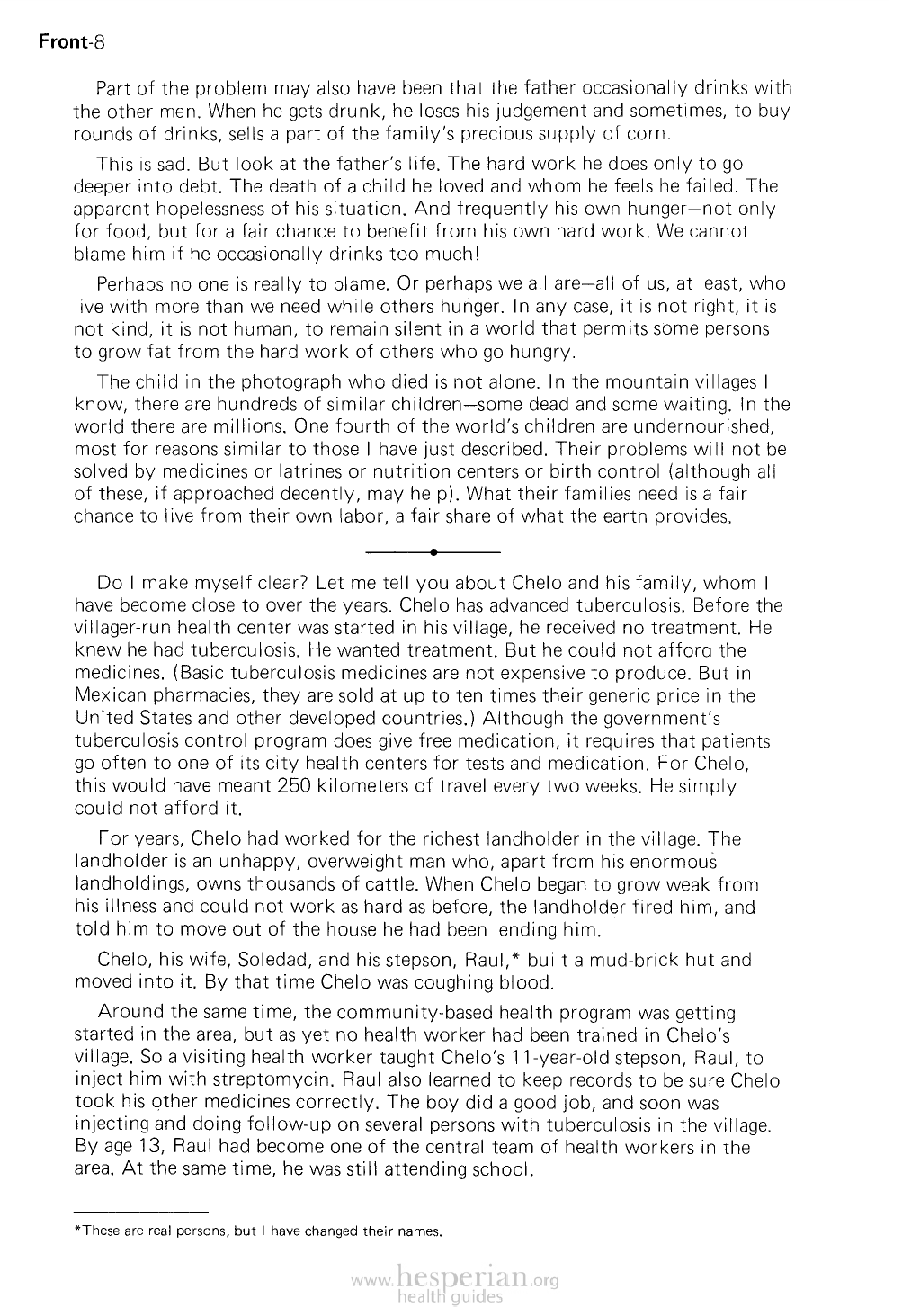
Front-8
Part of the problem may also have been that the father occasionally drinks with
the other men. When he gets drunk, he loses his judgement and sometimes, to buy
rounds of drinks, sells a part of the family’s precious supply of corn.
This is sad. But look at the father’s life. The hard work he does only to go deeper
into debt. The death of a child he loved and whom he feels he failed. The apparent
hopelessness of his situation. And frequently his own hunger—not only for food,
but for a fair chance to benefit from his own hard work. We cannot blame him if he
occasionally drinks too much!
Perhaps no one is really to blame. Or perhaps we all are-all of us, at least, who
live with more than we need while others hunger. In any case, it is not right, it is not
kind, it is not human, to remain silent in a world that permits some persons to grow
fat from the hard work of others who go hungry.
The child in the photograph who died is not alone. In the mountain villages I
know, there are hundreds of similar children—some dead and some waiting. In the
world there are millions. One fourth of the world’s children are undernourished,
most for reasons similar to those I have just described. Their problems will not be
solved by medicines or latrines or nutrition centers or birth control (although all of
these, if approached decently, may help). What their families need is a fair chance
to live from their own labor, a fair share of what the earth provides.
Do I make myself clear? Let me tell you about Chelo and his family, whom I
have become close to over the years. Chelo has advanced tuberculosis. Before
the villager-run health center was started in his village, he received no treatment.
He knew he had tuberculosis. He wanted treatment. But he could not afford
the medicines. (Basic tuberculosis medicines are not expensive to produce. But
in Mexican pharmacies, they are sold at up to ten times their generic price in
the United States and other developed countries.) Although the government’s
tuberculosis control program does give free medication, it requires that patients
go often to one of its city health centers for tests and medication. For Chelo, this
would have meant 250 kilometers of travel every two weeks. He simply could not
afford it.
For years, Chelo had worked for the richest landholder in the village. The
landholder is an unhappy, overweight man who, apart from his enormous
landholdings, owns thousands of cattle. When Chelo began to grow weak from his
illness and could not work as hard as before, the landholder fired him, and told him
to move out of the house he had been lending him.
Chelo, his wife, Soledad, and his stepson, Raul,* built a mud-brick hut and moved
into it. By that time Chelo was coughing blood.
Around the same time, the community-based health program was getting started
in the area, but as yet no health worker had been trained in Chelo’s village. So a
visiting health worker taught Chelo’s 11-year-old stepson, Raul, to inject him with
streptomycin. Raul also learned to keep records to be sure Chelo took his other
medicines correctly. The boy did a good job, and soon was injecting and doing
follow-up on several persons with tuberculosis in the village. By age 13, Raul had
become one of the central team of health workers in the area. At the same time, he
was still attending school.
*These ate real persons, but I have changed their names,